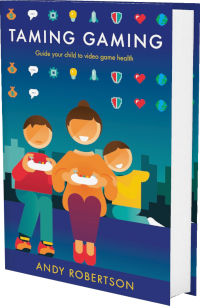 Android
Android iOS
iOS Mac
Mac Switch
Switch Wii
Wii Wii U
Wii U PC
PC PS4
PS4 PS5
PS5 Xbox One
Xbox One Xbox X|S
Xbox X|SWe've documented 17 accessibility features for Die in the Dungeon, including Fully Voiced (Or No Speech), Low Pressure, No Quick Reactions, No Button Combos and No Repeated Pressing. Its accessibility is strongest in Controls and Visual but it also has features in Getting Started, Reading, Navigation and Audio to reduce unintended barriers.
This report is created with input from accessibility experts and the player community to help people find games that have the accessibility features they require. Once you have found potential games on the database, there are excellent specialist accessibility sites that offer in-depth reviews to guide your purchasing decisions.
Our accessibility examiner, Ben Kendall, first checked Die in the Dungeon accessibility 6 months ago.
 Accessibility Notes
Accessibility Notes
Text is generally high in contrast, but somewhat less than 1/20th of screen height. However, the "Finish" button you need to click to finish your turn is much lower in contrast and blends into the surroundings.
There is no movement in the game apart from an automatic progression from one room to the next, so navigation isn't an issue.
Although the dice are colour-coded to show their effect, hovering over them with the mouse provides a textual description of their effect as well. there are also small icons that indicate use under each dice available to play. Before you click Finish to end your turn, you can see the total effect your move will have.
 Game Details
Game Details
Release Date: 09/03/2021
Out Now: Mac, PC and Web
Skill Rating: 9+ year-olds
Players: 1
Genres: Battle, Sequencing (Collecting, Fighting, Puzzle and Strategy)
Accessibility: 17 features
Components: 2D Side-On, Dice, Grid and Pixels
Developer: Die In The Dungeon (@DieInTheDungeon)
Costs: Purchase cost
 Controls
Controls
We've documented 4 accessibility features for Controls in Die in the Dungeon which deal with how you control the game, different options for alternative inputs and whether you can remap these settings to suit your needs.
Mouse And Keyboard
Can play with the following:
Mouse Alone: Can play with just the mouse/mouse-button/mouse wheel.
Button Combinations
Specific button operation required to play
Holding Down Buttons Optional: Holding down buttons for prolonged periods (a second or more) is not required or can be switched to toggling the action on and off. This is in addition to the movement stick/button which is not considered a hold for this purpose.
Rapid Repeated Pressing Optional: Quick, repeated button pressing (more than 2 times a second) is not required, can be skipped or switched to holding a button to trigger a repeated action.
No Simultaneous Buttons: Only one button or key required at a time, in addition to direction stick(s).
Similar Games With More Accessibility Features for Controls
If you want to play Die in the Dungeon, but it doesn't offer the Controls accessibility features you require, these similar games extend the Controls accessibility:
- Minecraft Dungeons (12 Controls Features)
- Hades (9 Controls Features)
- Slay the Spire (9 Controls Features)
- Vampire Survivors (8 Controls Features)
 Difficulty
Difficulty
We haven’t documented any accessibility features for Difficulty in Die in the Dungeon which deal with how you can adjust the challenge of play, and whether this is locked once chosen or can be adjusted as you play. The following games are similar to Die in the Dungeon, and offer accessibility features for Difficulty:
- Cassette Beasts (2 Difficulty Features)
- Vampire Survivors (2 Difficulty Features)
- Minecraft Dungeons (2 Difficulty Features)
- Hades (2 Difficulty Features)
 Getting Started
Getting Started
We've documented 3 accessibility features for Getting Started in Die in the Dungeon which deal with what support is offered to get started with the game. This includes customising the experience when you first open the game via any onboarding processes it provides as well as tutorials and other assistance when you first start playing.
Assistance Getting Starting
These features aid your play of the game in terms of cognitive load on learning controls, dealing with pressure and coping with the environment and challenges.
Tutorials: There are helpful tutorials and instructions on how to play. Information is provided in a timely manner, with appropriate level of detail.
Reaction-Time Not Critical: Individual game actions don’t need quick reactions, or there are settings to lower the requirement for quick reactions. This means you don't need to quickly press a button in response to an on-screen prompt, target a fast-moving target or skillfully complete a scenario against the clock.
Low Pressure: Game tasks aren't time-limited or there's a low-pressure mode. This avoids the pressure of being put on the clock for overarching missions, or failing tasks because you didn't reach a destination in time.
Similar Games With More Accessibility Features for Getting Started
If you want to play Die in the Dungeon, but it doesn't offer the Getting Started accessibility features you require, these similar games extend the Getting Started accessibility:
- Slice & Dice (6 Getting Started Features)
- Monster Train (6 Getting Started Features)
- Minecraft Dungeons (6 Getting Started Features)
- Slay the Spire (6 Getting Started Features)
 Reading
Reading
We've documented 3 accessibility features for Reading in Die in the Dungeon which deal with how much reading or listening comprehension is required, how well the game provides visual and audible access to the text and whether subtitles and captions are a good fit for purpose.
Reading Level
How much reading is required to play the game's main path or story and how complex the language is. The presence of voiced characters doesn't reduce this requirement, as it's recorded as a separate datapoint.
Simple Minimal Reading: Minimal reading is required. The quantity and complexity of reading are at a level that a primary/elementary student (9-year-old) could understand.
Subtitles
All Speech Subtitled (Or No Speech In Game): All spoken content has subtitles, or there is no speech in the game. This means there is no requirement to hear spoken dialogue or narrative to play the game.
Voice Acted
All Dialogue is Voice Acted (Or No Speech In Game): All of the game dialogue and narrative can be voiced, or there is no speech in the game. This means there is no requirement to read the dialogue and narrative text to play the game.
Similar Games With More Accessibility Features for Reading
If you want to play Die in the Dungeon, but it doesn't offer the Reading accessibility features you require, these similar games extend the Reading accessibility:
- Loop Hero (5 Reading Features)
- Minecraft Dungeons (5 Reading Features)
- Hades (5 Reading Features)
- Cassette Beasts (4 Reading Features)
 Navigation
Navigation
We've documented 2 accessibility features for Navigation in Die in the Dungeon which deal with how the game provides guidance and assistance to navigate its worlds. These are only for games that have traversal and exploration in 2D and 3D spaces.
Clarity
Large Clear Navigation: The in-game navigation and maps are clear to read. They offer large text and offer markers that are large and of high contrast. Where text or information is small, there are settings to zoom-in and increase visibility.
Clear Mission Objectives: The game provides clear, structured missions with directional guidance and advice on which can be attempted next. This also indicates (ideally on maps where they are provided) which missions can't be attempted because you do not have the appropriate items yet.
Similar Games With More Accessibility Features for Navigation
If you want to play Die in the Dungeon, but it doesn't offer the Navigation accessibility features you require, these similar games extend the Navigation accessibility:
- Minecraft Dungeons (10 Navigation Features)
- Lake of Creatures (7 Navigation Features)
- Monster Train (7 Navigation Features)
- Pokémon Scarlet & Pokémon Violet (6 Navigation Features)
 Visual
Visual
We've documented 4 accessibility features for Visual in Die in the Dungeon which deal with how you can adjust the visuals to suit your needs, and offer additional information if you can't hear the game.
Contrast
Medium Contrast: Game uses generally well contrasting and bright visuals, or has a slider to make this the case.
Audio Cues for Visual Events
Audio Cues for Visual Events: Audio is provided to indicate visual events. Game events or progress highlighted by visual icons, effects or animations are also accompanied by audio to signify that progress. This is useful for blind players.
Motion Sickness Friendly
Motion Sickness Friendly: Doesn't have 3D movement elements that may trigger motion sickness, like motion blur, depth of field and field-of-vision. Or includes the ability to disable motion blur, depth of field and field-of-vision effects.
Colour Options
Colour Blind Friendly: Game doesn’t rely on colour or can switch to colour blind friendly mode with double coding or similar way to avoid colour dependance.
Similar Games With More Accessibility Features for Visual
If you want to play Die in the Dungeon, but it doesn't offer the Visual accessibility features you require, these similar games extend the Visual accessibility:
- Slay the Spire (9 Visual Features)
- Monster Train (7 Visual Features)
- Minecraft Dungeons (7 Visual Features)
- Oceanhorn: Chronos Dungeon (5 Visual Features)
 Audio
Audio
We've documented 1 accessibility feature for Audio in Die in the Dungeon which deals with how you can adjust the audio of the game and whether audio cues compensate for aspects of the game that are hard to see.
Play Without Hearing
Play Without Hearing: No audio cues are necessary to play the game well.
Similar Games With More Accessibility Features for Audio
If you want to play Die in the Dungeon, but it doesn't offer the Audio accessibility features you require, these similar games extend the Audio accessibility:
- Vampire Survivors (3 Audio Features)
- Loop Hero (3 Audio Features)
- Mana Spark (3 Audio Features)
- Cassette Beasts (2 Audio Features)
System Accessibility Settings
In addition to the accessibility features provided in the game, you can also use system-wide accessibility settings:
PC
Windows has extensive accessibility features. Some, like colour correction, work with games. Lots of accessibility software can be used with PC games, from voice recognition to input device emulators.
Read more about system accessibility settings.
Accessibility Report supported by VSC Rating Board, PlayabilityInitiative and accessibility contributors Ben Kendall












